A global incident reporting system for powered access equipment provides crucial insight on the main causes of accidents – and how to avoid them.
Features
Powered access: what does the accident data show?
Accidents can teach us a lot about how to safely operate powered access equipment to conduct temporary work at height. That’s why, 10 years ago, IPAF (the International Powered Access Federation) launched its dedicated reporting portal.
The www.ipafaccidentreporting.org portal enables – and encourages – users around the world to confidentially report accidents, incidents and near misses involving powered access machines. This includes mobile elevating work platforms (MEWPs), which range from small push-around verticals, scissor lifts, articulated booms, truck, track and van- mounted booms, Mast Climbing Work Platforms (MCWPs) and hoists.
 This IPAF poster reminds people to create a safe working zone when working at height in public places.
This IPAF poster reminds people to create a safe working zone when working at height in public places.
The aim of encouraging reporting is to identify areas of risk and common trends globally, so lessons can be learned and shared with MEWP users to prevent future accidents. The knowledge gained is also used to create safety awareness campaigns and inform all the work IPAF does, including developing industry guidance and training.
So what are the findings of the latest IPAF Global Safety Report, and what lessons can MEWP users learn from it?
There were 736 reported incidents in the period from 1 January 2019 to 31 December 2020, which involved 768 people. These included 168 incidents causing damage to machine or property, 159 near-misses, 178 minor injuries, 72 major injuries and 172 fatal-injury reports, from 15 different countries, involving 195 people and 174 deaths.
When the portal was launched in 2012, IPAF estimated it would not be until 2017–18 before the database was broad and granular enough to offer meaningful data insights. Although IPAF has surpassed that threshold – and now has a lot of useful data – analysis of reported incidents is still limited by the relatively high reporting of serious incidents rather than minor incidents and near-misses.
As in any system, the output is only as good as the data inputted. Therefore, we must change the culture to empower all users, operators and supervisors to report even the most minor incidents and near-misses on a daily basis. That will undoubtedly aid in preventing serious accidents and loss of life in future. In fact, near-miss information is surprisingly useful in preventing more serious accidents, so we are particularly keen to encourage near-miss reporting, as well as accidents.
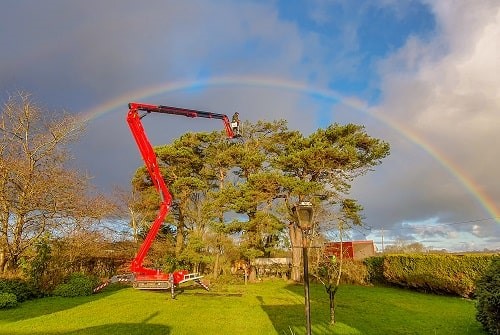 Trimming trees can pose a higher risk of electrocution if controls on the work or access to the danger area are inadequate. Image: IPAF
Trimming trees can pose a higher risk of electrocution if controls on the work or access to the danger area are inadequate. Image: IPAF
IPAF members in the UK, Ireland and the Middle East are mandated to report all incidents as a condition of membership, and IPAF is encouraging all employers globally to ensure their staff report incidents and near-misses, safe in the knowledge that the data is treated anonymously. The recently launched
IPAF ePAL App for operators of powered access also allows direct reporting to
the portal. This means operators are empowered to confidentially report all incidents – including near-misses – through the app, without fear of getting into trouble with their managers or having to fill out lengthy internal incident logs.
Machine categories
The IPAF accident reporting project is increasingly capturing reports about incidents involving MCWPs, hoists, 1b towable, 3b tracked, 1b tracked or spider MEWPs and 1a Push Around Vertical (PAV) machines. IPAF is committed to gathering as much usable data from every sector of powered access use.
Focus on the MEWP rental industry
The occupation of delivery driver – the person who delivers and collects the MEWP to and from a work site, typically an employee from a MEWP hire company – still features highly in the number of incidents reported. Data indicates that this is the occupation that is proportionally most at risk of an incident occurring and at risk of sustaining an injury – even more so than MEWP operators. Globally, 164 delivery drivers were injured and six fatalities reported.
There are likely to be various reasons for this. For instance, delivery drivers might be time pressured, might not always follow safe practice or may require additional training and support. Also, the circumstances of the delivery or collection of a MEWP may increase the risk – such as early morning or late-night working and poor lighting or weather conditions. In addition, clients may not have considered creating a safe location for the delivery or pick up of machines, and supervisory staff may not be on site at times of delivery or collection.
The previous report covering the period 2016–2018 had already identified that delivery drivers were at risk in this way. As a result, the IPAF Load and Unload training course underwent a major internal and stakeholder review and was subsequently updated to include the identified risks and hazards in a bid to help reduce accidents during MEWP deliveries.
Falls from the platform are almost always fatal
Reported data about falls from the platform shows 117 incidents involving 120 people injured and 93 killed. The main sectors were construction and arboriculture, with facilities management and electrical applications third and fourth respectively.
1b static booms were the most common machine type for this type of incident, followed by 3b mobile booms and 3a vertical lifts. Persons ejected or falling from a boom-type platform are likely to not have been using the correct personal fall protection equipment (PFPE), have not attached their lanyard to the correct anchor point, or used no PFPE at all, against industry guidance.
Mitigations: Sufficient planning and ensuring a safe system of work are essential. The data shows that occupants working from the platform have fallen due to: overreaching, standing on guardrails in the platform; being ejected from the platform due to the MEWP being struck at the base by other equipment; poor or insufficient ground conditions; not operating the equipment smoothly; falling objects; incorrect use of or not wearing harness and/or lanyard; and fallen while exiting or re-entering the platform at height.
Ensuring operations are adequately supervised is key to improving safety. Those who supervise MEWP operations should be IPAF MEWPs for Managers trained (or equivalent) and understand the safety rules pertaining to powered access.
Electrocutions: no second chances
The data tells us this type of incident almost always results in a fatality. Of the 97 reported incidents, 91 resulted in fatalities. In total, 101 people were injured or killed by electrocution while using MEWPs in the period 2016–2020.
In terms of industry end-use, arboriculture and electrical make up 60 per cent of all fatal electrocution incidents. Construction and facilities management together make up just under 30 per cent of electrocution fatalities, with telecommunications accounting for six per cent of these deaths.
Electrocutions are more likely to occur away from fixed and well controlled work sites where the risks are often easier to manage, such as a long-term construction site, commercial premises like warehouses, factories and power plants, and equipment hire depots. This type of incident is most likely to occur in a public area, including near to roads, and most commonly involves boom-type platforms. For example, work such as maintaining power lines, trimming trees and working alongside roads can pose a higher risk of electrocution if controls on the work or access to the danger area are inadequate.
Mitigations: Refer to the hierarchy and principles of avoiding the risk of electrocution contained in BS 8460 Safe Use of MEWPs – which include avoiding overhead power lines wherever possible and always observing minimum safe distances from power lines. Where this is not possible, ensure overhead wires are properly isolated and grounded to prevent static charge build-up.
Use of an Insulated Aerial Device (IAD) – which helps prevent the MEWP allowing electric currents to earth or arc to the ground – may be appropriate. However, this requires careful consideration during the planning, risk assessment, training and familiarisation processes before work commences.
A ‘look out, look up’ procedure to identify overhead power lines must be adopted. Operators must know the safe working distance from electrical sources and not exceed them – leaning out of the platform, moving conductive materials, or raising an outstretched arm could breach safe distances and cause electricity to arc. Weather conditions, especially humidity, should also be considered in risk assessments.
Why the outcome of entrapments is usually so serious
In the 2016–20 data from 15 countries, 84 people were injured, including 73 fatalities, in entrapment incidents. As with other accident types, entrapment injuries tend to be serious or fatal. In terms of sectors, entrapments mainly occurred in construction and then facilities management.
Most entrapments occur on construction sites and commercial premises. These sites are likely to pose an entrapment risk if, for example, a MEWP is being operated in and around the complicated steel frame of a building that is undergoing construction.
A common example is when a MEWP is used to install roofing, cladding and interior and exterior walls, working around the building’s steel frame.
Mitigations: It is important to carry out a site assessment prior to using any MEWP, consider the route the MEWP will travel, and identify any potential crushing areas where the platform and controls may be positioned or required to carry out the work.
A fundamental part of the site assessment is the selection of an appropriate MEWP, considering the size of the platform and manoeuvrability of the jib and platform. Once all potential crushing or trapping hazards are identified, selecting an appropriate MEWP with appropriate secondary guarding should be considered.
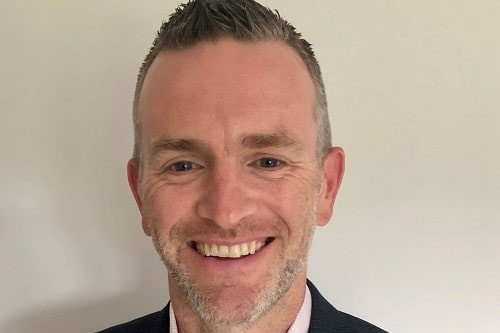 Brian Parker is Head of safety & technical at IPAF
Brian Parker is Head of safety & technical at IPAF
Secondary guarding means features other than the platform’s normal guardrails that can help to prevent entrapment and crushing, such as infrared alarms and proximity sensors that warn of an impending crush risk. Although it is not mandatory for a MEWP to have secondary guarding, it can play an important role in preventing entrapment or crushing, or raising the alarm if this situation occurs. Users are required to take all reasonably practicable steps to reduce risks, so it may be appropriate to select a MEWP with secondary guarding to help prevent entrapment.
Where’s the tipping point?
The data shows that in terms of countries reporting, the US reported the most tip-over incidents, followed by the UK and France. Sector analysis shows that construction was the most common sector for tip-overs, followed by facilities management. Common underlying causes in construction include unsuitable ground conditions, slopes and gradients, hidden ground hazards or collapsing ground. Other factors are likely to include inadequate risk assessment, underestimating load-bearing capabilities of the ground or incorrect assumption that the ground will take the weight of the MEWP.
Mitigations: Planning must always consider the ground or foundations, to ensure the supporting structure that the MEWP is going to be positioned or travel on is capable of taking the machine’s weight when loaded.
The whole area in which a MEWP will be operated must be assessed, and the route for the MEWP should be walked by the operator. Plans of the area should be inspected, or further enquiries made, to assess the likelihood of hazards – such as culverts, ducting or other cavities or structures hidden beneath the surface – which could collapse under the weight of a MEWP, causing a tip-over. Wherever possible, any hazards that could cause a tip-over should be moved or cordoned off.
Users and operators should know the rated load capacity of any machine being used and not attempt to exceed this, as overloaded MEWPs can easily overturn. They should also be aware of the effects of shock-loading – where a load falls onto a platform or a load falls from the platform while still attached to it. Also, users should always wear a full body harness and a short restraint lanyard in a boom-type platform, as occupants could be catapulted from the MEWP if it tips or is struck.
Risk is heightened away from controlled work sites
There were 85 reports from 10 countries of MEWPs being struck by another vehicle or machine, in which 89 people were injured, 22 fatally, according to the 2016–2020 data. Most of these incidents were reported from the UK. In terms of fatalities, construction is the leading sector followed closely by facilities management.
With multiple plant machines being operated on construction sites, it follows that there is heightened risk of a MEWP being struck by another vehicle or machine. In the facilities management sector, a fatality may be more likely caused by working alongside a road or in a public area and being struck by another vehicle. Hanging or changing advertising banners, cleaning windows, installing or repairing external air-conditioning units, sign writing and fixing or inspecting external lighting, are all common facilities management tasks where MEWPs are used and will often be conducted in a public area and/or alongside roads.
Mitigations: Planning is essential in minimising this risk. Consider the proposed set-up area and if during the manoeuvring phase, set up or working phase, the MEWP (or part of it) could extend or swing into potential traffic or other equipment routes. Adequate segregation from other vehicles and pedestrians is paramount. The MEWP and all occupants must be visible, even outside daylight hours or in poor weather.
Alongside roads, traffic-management procedures and appropriate closures, diversions, signage, lighting and lane management must be deployed. MEWPs must be loaded and unloaded in a secure and segregated location and not adjacent to or on a live carriageway. IPAF will shortly publish comprehensive guidance on safe use of MEWPs in public areas – keep an eye on our website for news of its release.
Falling objects/materials striking the MEWP
The 2016-2020 data shows 52 reports of MEWPs hit by a falling object or materials from eight countries, in which 55 people were injured, 21 fatally. Most incidents occurred in construction or arboriculture when the machine was elevated.
A typical accident would be material from a structure being installed or repaired – such as ducting, air-conditioning components or building cladding – falling and hitting the MEWP platform. Likewise, material can become unstable as a result of the task – for example, masonry could be dislodged during a building renovation or tree branches might fall. Outcomes from this type of injury are not necessarily always fatal, but usually involve at least serious injury. As with other categories of incidents, any object or material that falls in an uncontrolled way should be classified as a near-miss and logged via the IPAF portal.
Mitigations: Consider if there will be carriage of material above the MEWP, or if the MEWP is being used to work on or with materials that could fall on to the MEWP or its occupants. Falling objects and impact from the load falling on to the platform or landing on parts of the MEWP can result in crushing injuries. They can also create the catapult effect, leading to ejection from the platform of any occupant not wearing the correct PFPE.
As with specialist devices insulated to guard against electrocution risk or secondary guarding devices to help prevent entrapments, it might be possible to utilise specialist and manufacturer-approved devices to help prevent materials from falling from the platform – for example, tool tethers or platform netting.
Brian Parker is Head of safety & technical at IPAF (International Powered Access Federation)
Report all incidents involving powered access at:
ipafaccidentreporting.org
FEATURES
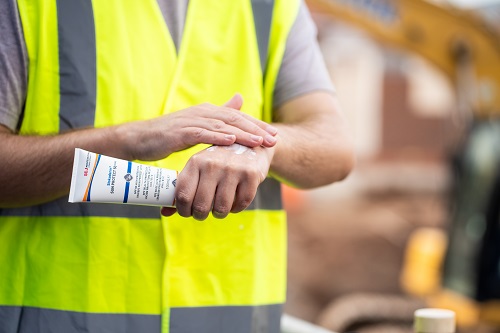
Facing the facts: protecting your outdoor workforce from UV exposure and skin cancer
By SC Johnson Professional on 11 July 2025
With outdoor workers at significant risk of skin damage, ageing and cancer due to exposure to the sun’s UV rays, it’s essential that employers in sectors like construction and agriculture create a working environment where sun safety precautions become the norm, rather than the exception.
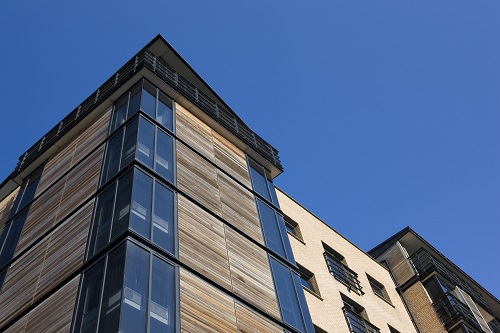
2025 UK fire safety regulation updates: a quick guide
By Chloe Miller on 11 July 2025
The regulatory landscape covering fire safety arrangements and structural features in domestic and commercial buildings has undergone a number of significant changes in recent years, making it essential for responsible persons to review their approach to keeping residents, workers and the nearby public safe from the risk of fire.
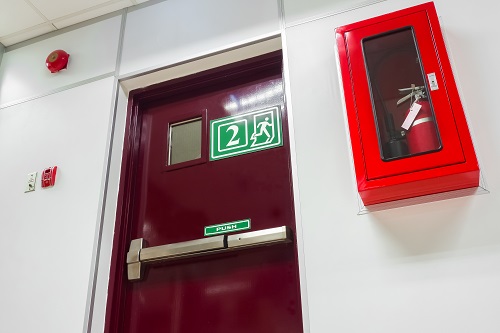
Tackling new fire risks as Fire Door Safety Week celebrates 12th year
By Helen Hewitt, British Woodworking Federation on 11 July 2025
The British Woodworking Federation’s annual Fire Door Safety Week this September will encourage duty holders such as those in charge of residential buildings to consider the dangers from lithium-ion batteries and ensure fire doors remain fit for purpose in reducing the risk should a battery-related fire break out.



